BED BUGS- Health problems due to bed bugs?! How to KILL BED BUGS get rid of bed bugs?
Bed Bugs
How to kill bed bugs
Preparation for the treatment of bed bugs
Bed bugs have oval flattened bodies, wingless and measure 4-7 mm long. They are a shiny brown colored insect. They swell after a blood meal and then take a dark brown color. There are three stages in the development cycle of a flea: egg, nymph and adult. The eggs are white and about 1 mm long. The nymphs look the same as adults, but are smaller. The last stage takes six weeks to several months to happen. The bug is usually found in the bedroom where it feeds on the sleepers’ blood at night.
Biology Bed bugs feed on human blood: The most common species is the common bed bug (Cimex Mlectularius). They are a serious nuisance and abundantly present.
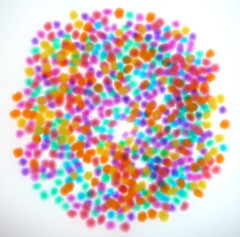
- Bed bugs
A blood meal takes 10 to 15 minutes for the adult bedbug, but less time for the nymph. During the day, the bug lies mainly on the periphery of the mattress. Depending on the degree of the infestation, it is also found hidden in cracks on the walls, floors and furnitures, in bed frames, behind pictures and under the wallpaper, hiding places also serve as breeding sites.
A temperature of 44oC to 45oC (111oF – 113oF) is lethal to these bugs. Their survival time is assessed to about 20 minutes when the temperature is 65oC.
Adults can survive more than a year without getting any blood.
Dispersion

- Bed bugs
The bug does not get far from its host if it can eat from them regularly. If the infestation is heavy, they can migrate to other rooms. The absence of prey leads to a dispersion of the bug. Thus, when the bugs are present in a room where the people sleep regularly, they tend to stay put. Be careful because if you remove them from the room, the bugs will be dispersed throughout the house or even elsewhere in the building. If this is not the case, they move from one room to another while walking on the ground. Removal or displacement of articles already infested (furniture, bedding, clothing, suitcases, etc..) From an inhabited place to another is the main mode of spread of bedbugs.
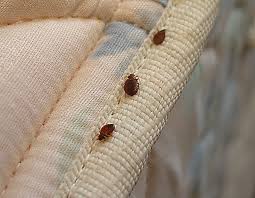
Importance for your health
Table 1 summarizes the main effects on the skin (and other more rare cases) associated with bedbug bites. The lesions are similar to those occasioned by a mosquito bite. Typically, bedbug bites appear as three to four bites in a straight line or grouped in one place on the skin, but if the house is seriously infested, several lesions may appear in multiple places on exposed skin when sleeping.
For most people, the bites will result in the formation of small reddish lesions that develop into elevated and hardened lesions. There is frequently a central puncture site of inoculation. These lesions cause severe itching, therefore, they are very troublesome. These lesions are more symptomatic in the morning and the intensity of redness and pruritus (itching) decreases during the day. The lesions occur mainly on exposed arms, legs and back. If the person is not stung again, the lesions disappear after two weeks.
Effects much less frequent but more serious may occur such as nettlerash and giant bulbous eruption that may be hemorrhagic. Children with atopy (allergies) are more likely to develop papular urticaria. Finally, anaphylactic reactions have rarely been documented (see Table 1 for a brief description of these effects on health).
In another words, secondary bacterial infections can occur from recurrent scratching from itching. However, this case is rare.
Table 1. Summary of skin problems associated with bedbugs
| Type of problem |
Brief Description |
Frequency |
| Wheal |
A smooth, slightly elevated, more reddish or pale skin surrounding the associated itching and usually transient. |
Following each bite |
| Nettlerash |
Rapid swelling of the skin with severe itching. |
Rare |
| Bulbous eruptions sometimes bleeding |
Similar to the bells on the skin, sometimes filled with blood. |
Rare |
| Papular urticaria |
Presence of papules 3 to 10 mm, sometimes surmounted by a vesicle that is more persistent than the wheals or typical nettlerash. These lesions can last from several weeks to several months. They are generally clustered and occur more often in young children. We can find these lesions on exposed parts. |
Rare |
No research has focused on the impact of an infestation by bugs on mental health and sleep. However, some references indicate that repeated bug bites could cause insomnia and anxiety.
Although at one time bug bites were suspected of transmitting viral hepatitis, or to develop anemia caused by multiple stings, so far, no proof of disease transmission by bugs or development of anemia has been documented.
Improper application of insecticides on mattresses to eliminate bugs can have important effects on health, particularly towards children. This practice is therefore to be avoided (see next section).
Control Measures
When the presence of bedbugs is suspected, it is strongly advised to call a professional to ensure that they are located correctly and that the various control methods (including the use of insecticides in some areas) are adequately made according to the standards. exterminators must first ensure that the right product is used and that insecticides are not spread over the beds of people. The exterminator is coming every month out of two in order to kill the bugs that will hatch despite the first use of insecticide. Several steps must be taken by the occupant during the process of extermination. These measures are explained to tenants by the firm responsible of the extermination.
Locating the insects
The infestation can be confirmed by the discovery (in the potential hiding places of bedbugs) of live insects, exuviae, eggs or faeces. These can be visible as small dark brown or black spots on the sheets, walls and wallpaper, and sometimes even in electrical appliances.
Control Methods
1. Physical Barriers
Simple barriers may be used. A barrier can be made by coating the legs of the bed with a few inches of petroleum jelly (Vaseline).
However, it should ensure that no part of the bed touches a wall that would provide an alternative access to the bed.
2. Cleaning by vacuum
Vacuuming is a very effective way to remove bugs already present. It is recommended to vacuum the mattress and box springs particularly where the seams, folds and structures are in the infested beds. If the outer envelope of the mattress is torn, bed bugs may have seeped inside it. If so, you may be obliged to dispose of the mattress, in this case, it is very important to clearly indicate that the mattress is infested so as not to shift the problem elsewhere. You should also vacuum the floor and where it is suspected that the bugs are hiding. Be sure to get rid of the vacuum bag immediately, without opening it, in a place where bugs can’t disperse again.
Used furniture should always be carefully inspected and cleaned before being used. Bedbugs are easily dispersed through the exchange of furniture or clothes.
3. Cleaning the bedding
Bedding (pillowcases, sheets, mattress covers, etc.) and linen should be washed with hot water and soap. The bedding should be placed directly into the washer from a plastic bag to prevent the spread of bedbugs in the laundry room and around the building.
4. Use of insecticides
We recall that it is always advisable to hire a professional exterminator to treat your home with insecticides. It will use a registered insecticide while respecting the recommendations designed to minimize the risks associated with the use of these products. Among the effective insecticides, it is preferable to use pyrethrins, pyrethroids and boric acid, as these products have a lower toxicity to humans than many other types of insecticides. People should avoid to do the extermination themselves, since the bugs are often resistant to the product used. If the product is misused, it will aggravate the problem rather than decrease it. Moreover, it is strongly recommended to use hot steam for the treatment of the mattress which are favorite places for bugs. This technique is effective and can significantly reduce children’s exposure to insecticides.
Pyrethrins and pyrethroids are sprayed everywhere we can find bedbugs, or along cracks in the walls, floor and furniture, bed frames, behind pictures and under the wallpaper. You must ventilate the area after the application of insecticides. Neither people nor animals should enter the rooms during the application of treatment or re-enter treated areas within two hours after treatment, and preferably six hours after treatment. It is also important to not walk barefoot on treated areas until 24-48 hours.
Boric acid is applied along the cracks in walls, floors, behind furniture and under the wallpaper that generally have bedbugs.
The insecticides do not work on the eggs. We must therefore repeat the treatment a month after applying the first treatment to ensure that the problem is eliminated.
Identification

- Bed bugs
Adults: 5-8 mm
Nymphs: 1-5 mm
Eggs: 1 mm
Antennas: 4 segments
The color varies from a pale yellow to a brownish red depending on the stage of development and blood ingested.
/ Signs of infestation
- Bites
- Bloodstains on the sheets or pillows
- Faeces (black spots)
- Exuviae (empty skin left behind after moulting)
- Adults and nymphs
- eggs (white)
- A peculiar smell musty or moldy (infestations)
Biology

- Eggs Bed bugs
Egg production:
- 1 to 5 eggs per day per adult female
- Up to 500 eggs per female in his life
- The eggs are attached by a sticky secretion
- 6 to 10 days to hatch
Life cycle
- from egg to adult: 21 days at 30 ° C and 120 days at 16 ° C (relative humidity 75-80%)
- 5 nymphal stages requiring a blood meal and a moulting to the next stage
- Life expectancy under normal conditions: 316 days
- 3 to 4 generations per year
Development Factors
- Minimum temperature for development: 13 ° C
- Lethal temperatures: Low: -16 ° C constant for 4 days. High: 50 ° C for 3 hours.
- Much prefer human blood but merely a warm-blooded animal.
- Their meals take 3 to 12 minutes.
- Under certain conditions, adult bed bugs can survive a year without feeding.
Habits
- Bedbugs move into the bags, luggage, furniture and other objects and are carried by people.
- Once introduced, they are often spread throughout the building.
- They tend to move as close as possible to their food source.
- They can move anywhere when the population increases.
- When disturbed or hunted, they hide anywhere.
- They gather in groups in their hiding places where they lay eggs, defecate and moult.
- The bugs come out at night but could be active by day if the food is not available at night or during a severe infestation.
- Bedbugs are attracted by carbon dioxide, heat and body odor.
- We generally observed that when given a choice, prefer to bite children first, then women and men as a last choice.
- Bedbugs prefer a dry, semi obscure, tissues or uneven surfaces.
- Its preference is for wood surfaces, paper and tissues.
- Bedbugs disdain drafts, polished surfaces and metal objects, but they can still navigate.
- They do not like the movement.
- After treatment, if no bite or no evidence of the presence of bugs is found in a period of 45 days, the problem is almost certainly set. If there is occurrence of bugs or bites after a period of 45 days without activity, bedbugs have very likely been reintroduced.
Factors of the bedbugs’ resurgence in the world
- Although nearly exterminated in North America after World War II, bedbugs have remained widespread in Asia, Africa, Central and South America and Europe.
- Bugs naturally settle in the bags, luggage, furniture and other objects and are carried by the millions of visitors and tourists.
- The more targeted use of insecticides and bait traps for several years has given free rein to bugs.
- The recall of several insecticides that were effective against bedbugs and other restrictions on the use of insecticides.
- Lack of knowledge of our own health and of the population in general helped to disperse the bugs before making a diagnosis and appropriate treatment.
Health risk
- Although bugs can sometimes carry human pathogens, no study could prove they also transmit it. For this reason, Health Canada does not consider it a public health problem. We believe that this could change.
- Lack of sleep
- Infections of the wounds if you scratch
- Isolation or psychological problems
- Repeated exposure to insecticides if multiple treatments are inconclusive
- Respiratory problems due to exuviae’s particles of bugs that are found in the air.
Bite Reaction

- Bite of Bed bugs
- Reactions can vary greatly from one person to another depending on his degree of sensitivity
- Normally, small red swelling appears because of an allergy some people have. It is a reaction to the saliva injected by the bug
- 30% of the population have no reaction after being stung
- The reaction can occur up to 2 weeks after the bite
Working with your landlord and / or manager of property is desirable and even crucial to overcome the infestation. It will be important to contact him to get a date for the treatment.
Talk with him to know how all the stages of the preparation are going before the treatment. Listed below are the recommendations that will help you prepare the affected areas of your home for the treatment.

- Kill Bed bugs
- Empty the closets, drawers, desks. Place bedding and clothing in plastic bags, close them and take them out of the room. Make sure all bags are securely closed before moving from one room to another.
- Wash bedding and clothing in the hottest water possible, then dry them at the highest temperature. Replace all bedding and clothing in new plastic bags and close them again.
- All carpets, handmade carpets, upholstery and imported fabrics require steam cleaning and / or professional dry cleaning.
- Throw away unnecessary clutter and remove any objects lying on the floor. Wash all floors, desks, drawers, closets housing before treatment.
- Use a vacuum cleaner with a crevice tool to capture bed bugs and eggs. Vacuum crevices of the mattress on the bed frame, box spring, headboard, bed legs, baseboards, quarter round, trim and all the objects that are near the bed. Repeat the same process in all parts of the house. Make sure the vacuum has a bag that can be removed after each use. Avoid using bag-less vacuums. Vacuum every day after the application of insecticide and remove the bag after each use.
- 24 hours after treatment, you can put the lingerie and clothing in the desks, dressers, drawers, closets and night stands. Do not wash the insecticide for at least 30 days or 90 days, for best results.
No animals, fish, reptile or bird should be in contact with the workpiece infected for at least 30 days after application of the insecticide.
When the treatment is done, particularly when the mattress and pillows have been treated, we recommend closing the door of the room in question and preferably wait at least 24 hours before returning to sleep, especially if it’s a child’s room. Although low toxicity pesticides are recommended, you should still respect the delay to reduce the risk of exposure and particularly for those who are more sensitive. Once the delay is over, it is necessary to ensure proper ventilation of the room, ideally, by opening the window for some time. After making sure the mattress is dry, you will then have to put a mattress cover in plastic with a zipper, clean sheets and pillowcases before going to bed again.
If the mattress, box springs, futons, sofa beds and chairs have cracks and / or holes, they must be put in the trash. You will have to make sure it is respecting the environment and public health.
New post of Bed bugs, kill them with a new natural product!!
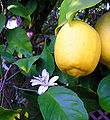
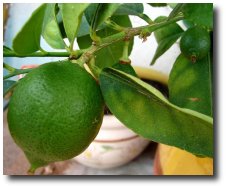










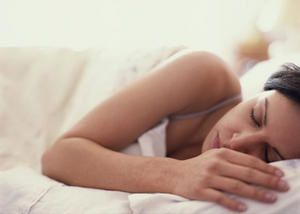




















 Every soul rubber mattress organic Green Sleep is guaranteed for 20 years ofgood use since July 2008. Each mattress has its certificate of origin and a manual. Remember that a mattress is acidified with sweat and deforms after a while depending on the weight of your body. So be your mattress review by a consultant from Green Sleep every eight years.
Every soul rubber mattress organic Green Sleep is guaranteed for 20 years ofgood use since July 2008. Each mattress has its certificate of origin and a manual. Remember that a mattress is acidified with sweat and deforms after a while depending on the weight of your body. So be your mattress review by a consultant from Green Sleep every eight years.

Comments